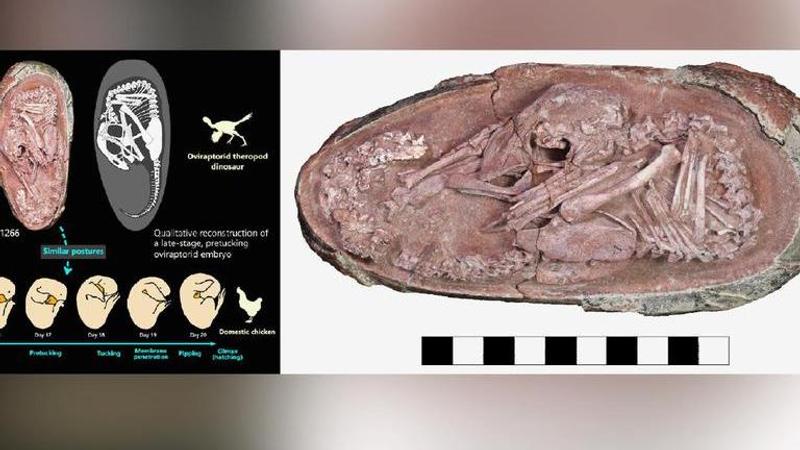Published 16:20 IST, December 22nd 2021
In China, scientists discover perfectly preserved embryo of dinosaur in Ganzhou
An embryo of a dinosaur, which is 66 million years old that was prepared to hatch from its egg was discovered by scientists in Ganzhou, China.

An embryo of a dinosaur that was prepared to hatch from its egg was discovered by scientists in Ganzhou, China. The embryo is speculated to be at least 66 million years old. Scientists believe that the embryo is of a toothless theropod dinosaur or oviraptorosaur, which is a feathered maniraptoran dinosaur from the Cretaceous Period, as per the reports of BBC. Oviraptorosaurs, which translates as "egg thief lizards," were feathered dinosaurs that lived between 100 million and 66 million years ago in what is now Asia and North America. It has been named Baby Yingliang by scientists.
Dr Fion Waisum Ma, who is the lead researcher, described it as the greatest dinosaur embryo ever discovered in history, according to BBC. The fossil depicts the embryo in a curled position known as "tucking," which is a behaviour found in birds just before hatching.
Most magnificent dinosaur fossils
University of Edinburgh Professor Steve Brusatte, who is a member of the research team, stated that it was one of the most magnificent dinosaur fossils he had ever seen and that the embryo was about to hatch. He shared a number of tweets describing the creature. Along with the tweet, he also shared various images depicting the posture of dinosaurs and modern-day chickens. In another tweet, he shared an image showing how the dinosaur would have looked in the egg stating, "This is part of an embryo's coordinated dance to prepare itself to break through its egg and enter the world. Tucking is essential for a successful hatch."
Steve Brusatte stated that little prenatal dinosaur looks just like a baby bird wrapped in its egg, providing more proof that many traits of today's birds first originated in their dinosaur ancestor. Because part of Baby Yingliang's body is still covered by rock, the team plans to analyse it in more depth using advanced scanning techniques to obtain a comprehensive image of the skeleton, including its skull bones, according to Al Jazeera.
Creature would have been 6.5 feet to 9.8 feet long
The scientists claim that if it had lived to adulthood, the creature would have grown to be two to three metres, which is around 6.5 feet to 9.8 feet long and would have eaten vegetation, according to Al Jazeera. The specimen was one of the numerous egg fossils that had been stored for decades and forgotten about.
Updated 16:20 IST, December 22nd 2021




